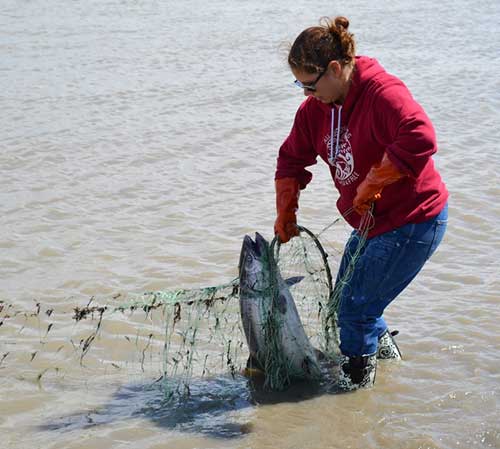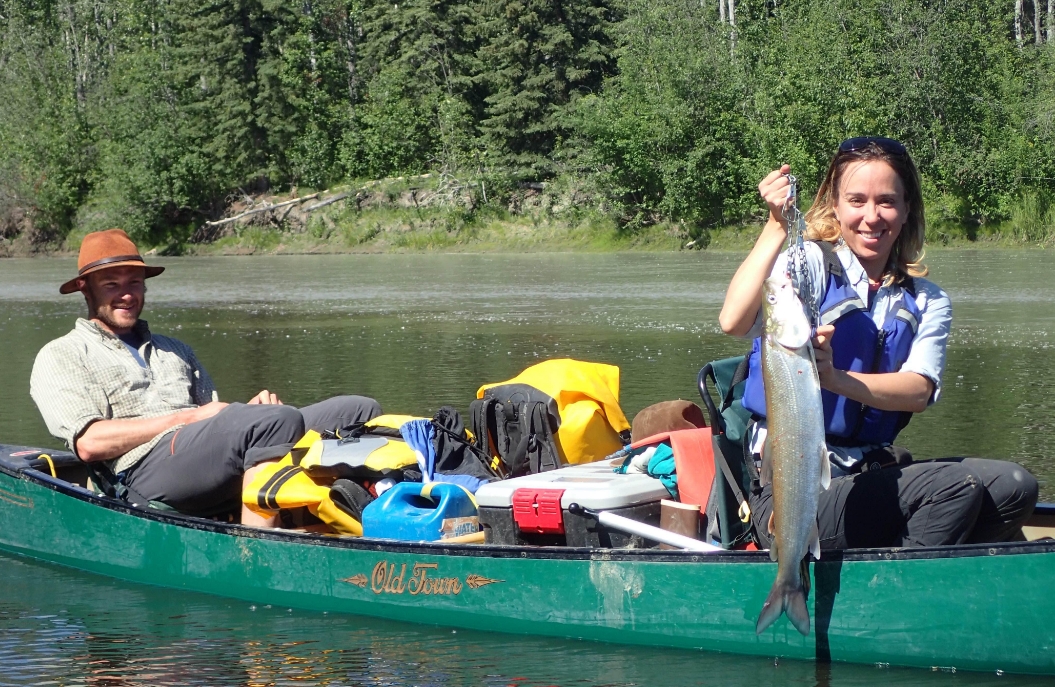The BLM is studying the concentrations of metals in fish and aquatic insects along the Kuskokwim River and several tributaries upstream and downstream of the Red Devil Mine. The study covers non-salmon species that make up a large portion of the diet of subsistence users in the area.
During the summer and fall of 2010 and 2011, the Alaska Department of Fish and Game collected fish tissue samples for the BLM from adult northern pike, sheefish, burbot (or lush), Dolly Varden, and arctic grayling in the lower stretches of the George and Holitna rivers, in addition to 73 miles of the Kuskokwim River from Stony River to Crooked Creek.
During the field sampling efforts, BLM fisheries staff also collected aquatic insects and juvenile fish, including Dolly Varden, arctic grayling, long-nosed sucker, and slimy sculpin, from eight small streams that flow into the Kuskokwim River. The farthest downstream tributary sampled as part of this study was an unnamed stream just below the George River. The most upstream tributary sampled was Vreeland Creek, which enters the Kuskokwim River just below Sleetmute.
U.S. Geological Survey water resources staff helped the BLM with the study by collecting water and sediment samples from each tributary. They also collected water and sediment samples from the Kuskokwim River upstream ofSleetmute where the Kuskokwim joins the Holitna River and also at Crooked Creek. The BLM is in the process of evaluating these samples in conjunction with the fish tissue and aquatic insect tissue results to get a clearer understanding of concentrations in the aquatic ecosystem of the middle Kuskokwim River.
In 2011 and 2012, the BLM received funding for a fish tracking project to determine the seasonal movements of northern pike, burbot, and arctic grayling in the middle Kuskokwim River. In 2011, several hundred transmitters were surgically implanted in pike and burbot by staff from the Alaska Department of Fish and Game. The tagged fish were also tissue sampled for future contaminants analysis. During the summer and fall of 2012, the Alaska Department of Fish and Game tagged additional pike, burbot, and nearly 200 arctic grayling in the study area, which was expanded north to include the Takotna River system.
The original study area established in 2010 covers approximately 15.5 million acres in the middle Kuskokwim River watershed. In 2012, the study area was expanded to include 15 million additional acres of the lower Kuskokwim River to track the movement of fish that travel beyond the middle section of the river. Since 2010, the BLM and ADF&G have collected tissue samples from over 1,200 fish from the Kuskokwim River and 17 of its tributaries. Of those sampled fish, nearly 570 were tagged with radio transmitters, and their movements will be tracked over the next 1-2 years. The movement data will show the amount of time fish spend in specific areas of the Kuskokwim Basin will allow us to identify areas that may contribute to the elevated metals in fish within the study area.
The latest interim report describing the results of this study is available below. This report will be updated in February 2013 and periodically thereafter to include the analysis of fish tracking data.
All files below are PDF.
All images in this release are courtesy of BLM.
Source: BLM






